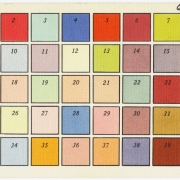One in five internet users probably can’t access your website. This is why…
Internet technology is great. As many as one in five people, though, experience challenges which make it more difficult for them to access computers, tablets, or smartphones. Many of these individuals rely on accessibility tools (such as screen readers, magnifiers, colour changes, or voice recognition) to aid their use of technology and, especially, the internet. These one in five people include your customers and potential customers. If your website isn’t accessible using accessibility tools, you’re preventing up to 20% of internet users using your site and becoming your customers. Accessibility is not only a crucial practice in website design and development, it’s also good for your business.
Making your website accessible
Some accessibility challenges are obvious: such as the fact that a visually impaired person won’t be able to see the pictures or videos you post. Other’s individual needs are less visible, eg. someone with dyslexia may not be able to access a text-heavy page; or an autistic person may struggle to cope with a complex or inconsistent colour scheme.
Fortunately, there are some clear, simple design principles you can follow to ensure that your site is accessible to as many people as possible. Your professional web designer will be able to help you with some of the more technical aspects of accessible design, however, as an online business owner, you need to play your part too.
1. Keep it simple. Your website is a communication tool, like an email or a phone call. You wouldn’t play music in the background of a phone call any more than you would use four different fonts and three different colour schemes in an email, because you know that it would impair its basic purpose. Your website is no different. All users, but especially those with additional needs, expect to be able to access the information they are looking for simply, and easily. So, say no to unnecessary graphics, colours, or animations; and keep your writing concise and straightforward.
2. Provide alternatives. If you use pictures or multimedia content, always provide a text-based alternative. For videos, or audio, you should include a transcript. For photos or graphics, use the tag (ask your web designer) to provide a text description. Doing this makes your site accessible to screen readers – and improves your SEO.
3. Downloads are bad. Providing content as a download, especially in .pdf format, makes it much harder to access using all different types of accessibility tools. Some .pdf documents are not accessible at all using screen readers or magnifiers. Unless there is no alternative (and there is always an alternative) all your content should be on your website itself.
Find out more…
If you’re interested in more tips and tricks to make sure your website is accessible, the folks at gov.uk digital have produced an excellent poster series with much more information, which you can access at https://accessibility.blog.gov.uk/2016/09/02/dos-and-donts-on-designing-for-accessibility/. You can also speak to one of our professional website designers and developers for any advice or support you need.












Leave a Reply
Want to join the discussion?Feel free to contribute!